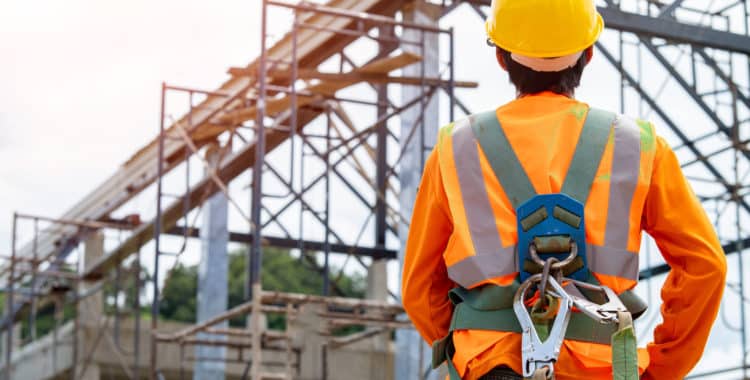The Fatal Four: The most dangerous accidents that occur on construction job sites
On average, over 150,000 injuries due to construction site accidents occur every year in the United States. Between heavy equipment, precarious workspaces, exposed wiring and sharp metal, it is no surprise that construction is one of the most dangerous industries in the country, which is why construction accident lawyers are a necessity for construction workers and their families.
Of all the construction accidents that result in injury — from slip-and-falls to dismemberment and impalement — four are the most common, according to the Occupational Health & Safety Administration. Formerly dubbed the “Fatal Four,” these four types of accidents are the leading causes of death and injury in construction: Falls, electrocutions, struck-by hazard and caught-in/between.
If you or a family member has been a victim of these kinds of construction site accidents, they may be entitled to compensation and damages if there was negligence on the part of supervisors, the construction company or a third party. In the event of such an accident, you can call Conexión Legal at 1800 201 1220 or messaging us through WhatsApp to receive free legal advice. If needed, we can connect you to a member of our network of attorneys who specialize in construction site accidents.
What are the Fatal Four?
Falls
The number one killer of construction workers on the job, fall hazards are everywhere on construction sites: Floors slick from spilled fluid or water, loose roof tiles, ladders and scaffolds. That is why fall protection is required.
At six feet, general fall protection is required, such as a guardrail system, covers or personal fall arrest (PFA) systems. At 10 feet, scaffolds are required, and at heights of 15 to 30 feet, steel erection is required.
Scaffolding must be inspected before being used for the first time, and then every seven days until it is removed. Scaffolding must also be inspected each time it is exposed to conditions likely to cause deterioration, like adverse weather, an earthquake or substantial alteration. Scaffolding collapses can cause major injury and death, and if it can be found that inspection was not conducted as required, or that the scaffolding was not properly installed, the party responsible could be liable for damages.
Electrocutions
The second deadliest construction hazard is electricity. Even if not fatal, electrical injuries can impact quality of life and hinder one’s future ability to work and earn an income. Electrical injuries can include burns, electric shock, falls caused by electric shock and fatal electrocution. Electric shock can damage skin and internal organs, and even cause neurological damage. Even if the surface injury looks minor, major damage may have been done to internal tissues.
If you are the victim of an electrical injury on a construction job site — due to faulty equipment, live wires that have not been grounded, inadequate tools, poorly marked junction boxes or inadequate lighting — you may have a workers’ compensation claim.
Struck-by object/hazard
From falling bags of concrete, moving vehicles and swinging equipment and materials, struck-by injuries are produced by forcible contact or impact between the injured person and an object or piece of equipment. The key distinction between a struck-by injury and a caught-between injury (which we will detail next) is that a struck-by injury is caused by the impact alone, rather than being crushed between two objects.
Struck-by injuries can occur as a result of a falling object, a flying object (a spinning saw blade that comes loose from its housing), a swinging object (a load of bricks) or a rolling object (a vehicle, an end loader or large pipe).
OSHA requires employers to protect workers from struck-by hazards by doing the following:
- Provide proper personal protective equipment — such as high-visibility clothes — near equipment and vehicles
- Provide required training for equipment and vehicles
- Ensure that operators, riggers and signal persons are qualified and competent
Failure to abide by these requirements may constitute negligence.
Caught-in/between
Caught-in/between construction accidents are workplace accidents where workers are pinned, squeezed, caught, crushed, pinched or compressed between two more more objects, or between parts of an object. That includes individuals caught or crushed in operating equipment, between a moving and a stationary object, or between two or more moving objects.
Examples of these injuries include a cave-in while trenching, being pulled into or caught in machinery or equipment, and strangulation when clothing is caught up in moving equipment. Being compressed or crushed between rolling, sliding or shifting objects is also a caught-in/between accident, such as when a worker is pinned between a semi-trailer and a loading dock wall.
These injuries can be caused by machinery with unguarded or moving parts, inattentive or untrained operators or spotters while digging or filling trenches, and unsecured or improperly secured machinery that could come loose and roll or slide.
If you, a friend or family member is the victim of one of these accidents, you or they may have a right to file workers’ compensation claim. If a family member is killed because negligence in any of these or other construction site accidents, you may be able to file a wrongful death suit.
If you suspect negligence, get in touch with Conexión Legal. Call us at at 1800 201 1220 or write to us through WhatsApp to receive free legal advice. If you choose, we can connect you with experienced construction accident attorneys.

El equipo de redactores de Conexion Legal está compuesto por un grupo de abogados especialistas en casos de accidentes de tránsito, laborales e inmigración para latinos. Cada miembro del equipo cuenta con amplia experiencia en su área de especialización, y todos ellos están comprometidos en ofrecer la mejor información y asesoramiento legal a la comunidad latina.

